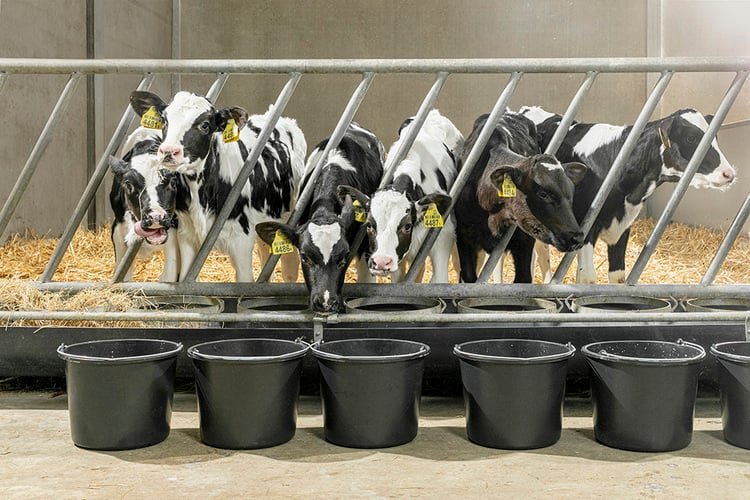- LifeStart
- Calf to heifer
Key takeaways from the research:
-
The mass of mammary gland parenchyma is significantly greater in calves fed a higher plane of nutrition, pre-weaning.
-
Mammary fat pad development is also significantly greater in calves fed a higher pre-weaning level of nutrition.
-
Overall mammary gland development of dairy heifer calves is positively affected by providing a higher pre-weaning feeding plane

Mammary gland development of heifer calves is positively affected by a high plane of feeding during the pre-weaning.
Stimulating mammary gland development of heifer calves, aiming at an increase in future milk production, has long been a goal for dairy farmers. There is a broad body of evidence that elevating the level of nutrition after weaning but prior to puberty negatively affects mammary gland development and milk yield. The effects of elevating the level of nutrition prior to weaning on mammary gland development are not fully understood. A study on the effects of an elevated plane of nutrition before weaning on mammary gland development was carried out by the Virginia Polytechnic Institute and State University and the US Department of Agriculture[1].
Study design
Two groups of 18 Holstein heifer calves were included in the study. All calves were housed individually with ad libitum access to water. The control (CON) group was fed 454 g of calf milk replacer per day containing 20% crude protein and 20% fat. The accelerated group (ACC) was fed 1135 g of MR per day at 28% CP and 25% fat. Starter feed was introduced at week 5 and the amount of calf milk replacer fed in both groups was reduced to 50% to prepare the calves for weaning at 8 weeks of age.
Teats were measured weekly and udders were examined through palpation and visual examination. At weaning, six calves per treatment were killed and their mammary glands were removed, weighed and dissected.
Results
The ACC calves had longer front (1.3 cm vs. 0.9 cm) and rear (1.2 cm vs. 0.8 cm) teats than CON calves. ACC calves also had heavier udders (255g vs. 66g) than the CON calves, with the difference being even more pronounced after the skin was trimmed (198g vs. 38g). The mammary gland parenchyma and the mammary fat pads of the ACC calves had a greater mass than those of the CON calves (10.5 g vs. 1.4 g and 173 g vs. 29 g respectively).
Conclusion
The results of this study are in line with those of other researchers who found that elevating the pre-weaning plane of nutrition in dairy calves has a strong, positive impact on mammary gland development.
References
[1] Geiger, A.J., James, R.E., Parsons, C.I., Capuco, A.V. and Akers, R.M. Enhanced pre-weaning nutrition stimulates mammary gland development in dairy heifer calves. J. Anim. Sci. Vol. 93, Suppl. s3/J. Dairy Sci. Vol. 98, Suppl. 2. 2015.



